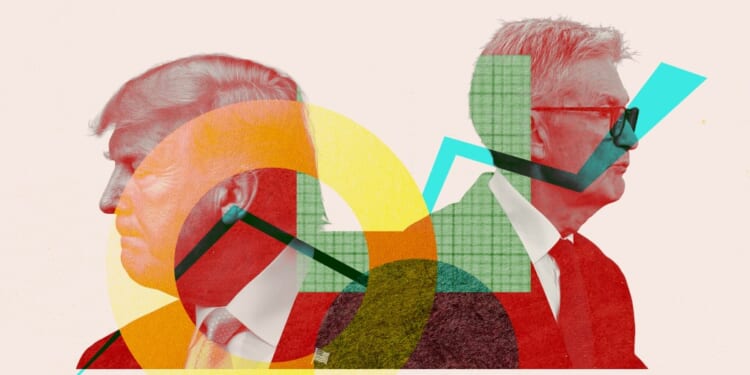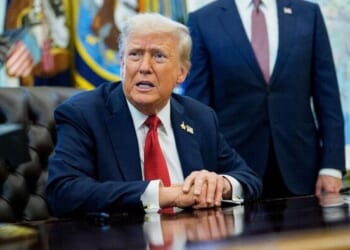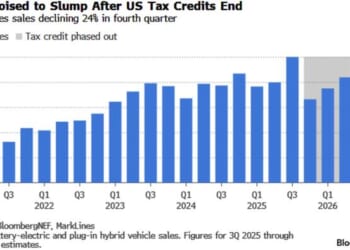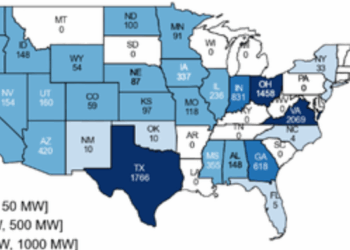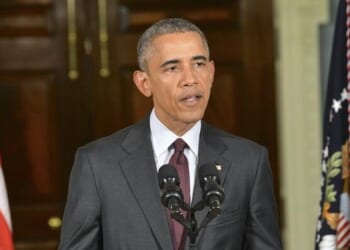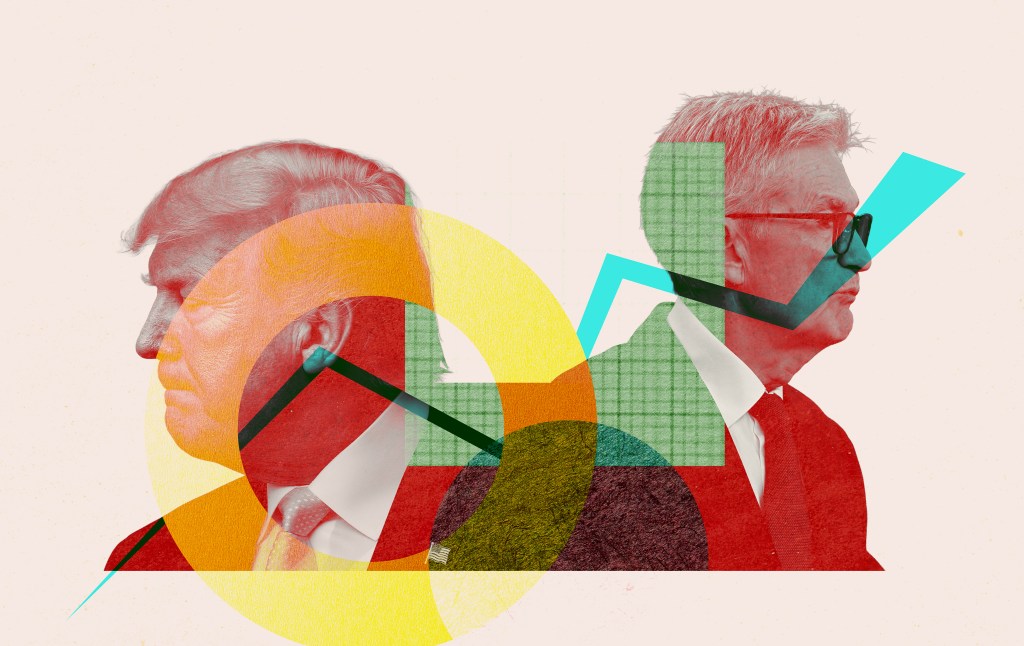
President Trump has declared war on the prized independence of the Federal Reserve in an attempt to essentially run monetary policy out of the White House. He has attempted—illegally and on dubious grounds— to fire Fed Gov. Lisa Cook, threatened to fire Chairman Jerome Powell, and installed a top White House economist into a key Federal Reserve position. This White House pressure surely drove the Fed’s decision to reduce rates by 0.25 points on September 17.
Going to war against the Federal Reserve seems baseless when current interest rates—while above the anomalous 2010s levels—are not high by historical standards. Moreover, rates are not holding back the current economy, and they may even be too low to combat the recent inflation uptick. However, President Trump has offered an additional argument: Lower interest rates would reduce Washington’s interest on the national debt, “saving us $1 Trillion per year” in reduced budget deficits. This sacrificing of Federal Reserve independence to help the Treasury sell cheaper debt is known to economists as “fiscal dominance.”
Setting aside legitimate concerns over central bank independence and the illegal firing of Fed officials, would fiscal dominance really provide substantial budget deficit savings? The clear answer is no.
Trump is correct that mounting interest costs threaten to bury the federal budget. The toxic combination of soaring debt and elevating interest rates has expanded what the government spends on interest annually from $352 billion in 2021 to nearly $1 trillion today—heading toward $2 trillion within the next decade. Interest costs are the second-biggest budget item after Social Security, having recently surpassed Medicaid, defense, and Medicare spending. Within a decade, nearly 30 percent of all annual taxes paid may go toward interest on the national debt. To put that in perspective, it amounts to nearly four months of annual federal tax revenue.
Yet instead of working with Congress on a deficit reduction plan, President Trump has chosen to increase deficits further with more tax cuts, and then try to force downward the interest rate on the federal debt.
Let’s calculate the savings estimates. The total national debt is $37 trillion, of which $30 trillion has actually been borrowed from the public (most of the rest represents the Social Security trust fund and other “intragovernmental debt” that was never actually borrowed from the public). Of that, $29 trillion represents “marketable debt”—tradable government bonds, in other words. These bonds are sold with maturities ranging from four weeks to 30 years, but the average weighted maturity is 72 months. That means that roughly half of our existing debt comes due over a six-year period. Within the next year, $9 trillion of this debt will come due and must be replaced with new bonds at whatever interest rates prevail at the time. Adding $2 trillion in new borrowing from new budget deficits means the Treasury will have to sell $11 trillion in securities next year.
However, the Federal Reserve does not directly determine the interest rate paid on federal debt. The Treasury auctions its bonds to the lenders who will accept the lowest interest rates in return. As such, the market determines the interest rate that it is willing to accept for lending Washington money. Federal Reserve activities can influence the prevailing market rate for short-term bonds to a great degree. But interest rates for longer bonds are based more on inflation expectations, economic confidence, and global savings patterns.
In fact, purchasers of medium- and long-term bonds may well respond to fiscal dominance by demanding higher—not lower—interest rates to compensate for the higher inflation likely resulting from these Federal Reserve rate cuts. Much of Treasury’s savings in short-term bonds could be swallowed by the higher cost of medium- and long-term bonds.
Thus, even if the Federal Reserve cut interest rates by a full percentage point, the effective reduction in interest rates for new Treasury securities would likely be closer to 0.4 percentage points, such as dipping from 4.4 percent to 4 percent. Out of $11 trillion in bond auctions, this would save Washington roughly $44 billion in the first year. That is real money, but not enough to substantially reduce the nearly $2 trillion budget deficit and $7 trillion in federal spending. It is also far less than the president’s $1 trillion savings estimate (which would require eliminating the entire $1 trillion annual interest cost).
Maintaining these low interest rates would eventually catch more of the federal debt, yet the data from the White House’s own Office of Management and Budget (OMB) is even less optimistic. It calculates that, even if economy-wide interest rates permanently fell by 0.5 percentage points (including for long-term bonds), the total federal budget savings would total just $25 billion in year one and $253 billion by year 10, out of an annual budget deficit heading toward $4 trillion.
Some readers may ask: If the Fed can more directly control short-term interest rates, then why not convert the rest of the federal debt to these short-term bonds? Because that would be as shortsighted as a homeowner choosing a 30-year mortgage with a fully adjustable interest rate: Any initial savings would be accompanied by the exposure to enormous potential costs if interest rates ever significantly rise—as they surely would at times over three decades. In fact, the government’s focus on cheap short-term borrowing has already backfired in recent years. During the 2010s, Washington refused to lock in more debt at 30-year rates of between 2 and 3 percent because it preferred short-term rates that were below 1 percent. Given how much interest rates have risen and are likely to continue rising, locking much more debt into rates of 2 to 3 percent could have saved Washington trillions of dollars over the long term.
Fiscal dominance is a key reason why spiraling government debt is so dangerous. My 2021 study correctly predicted the coming rise in interest rates and the resulting temptation of fiscal dominance. Politicians will inevitably ask why they should impose politically suicidal tax increases and cuts to popular spending programs, when they can instead just force the Federal Reserve to make government borrowing nearly free.
The danger, of course, is that locking the Fed into low interest rates paralyzes its ability to manage inflation and stabilize the economy. The result would be steep inflation, economic instability, and slower economic growth. It has happened before. During World War II, the Federal Reserve explicitly agreed to maintain low interest rates to help the Treasury borrow cheaply to finance the war. However, when the war ended, President Truman continued to demand artificially low interest rates, and inflation spiked. Finally, in February 1951, with inflation growing at an annualized rate of 21 percent, the Federal Reserve was finally liberated to set monetary policy based on price and business cycle stabilization. This period showed once again the importance of preserving Federal Reserve independence and removing short-term political considerations from monetary policy.
There are no lazy short-cuts to reining in $2 trillion budget deficits. Tax cuts do not increase tax revenues, reining in “waste, fraud, and abuse” will not dramatically slash spending, and President Trump seizing control of the Federal Reserve cannot prevent surging interest costs. Instead, such a move would destroy the Fed’s credibility in fighting inflation and paralyze its ability to stabilize the business cycle. All to offset a small fraction of the cost of President Trump’s agenda.

